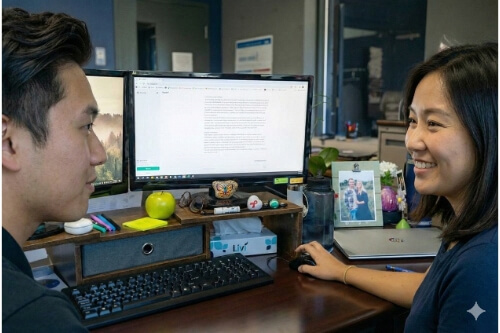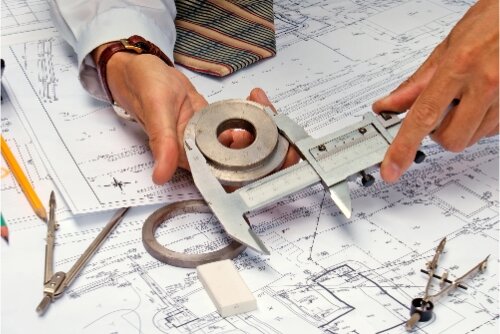Australian teams often face slow sample cycles that delay testing, push back launch plans, and increase project risk. Early prototypes play a crucial role in ensuring design accuracy, conducting function checks, and planning assembly. Faster sheet metal prototyping enables teams to respond quickly, make informed decisions, and maintain a steady development timeline.
Cross-border sheet metal prototyping offers fast lead times and reliable shipping to Australia. It provides engineers and buyers with early samples for design checks, pilot builds, and customer demonstrations. Quick feedback loops prevent stalled projects and reduce the cost of late corrections.
Fast samples give teams confidence as the project progresses from idea to production.
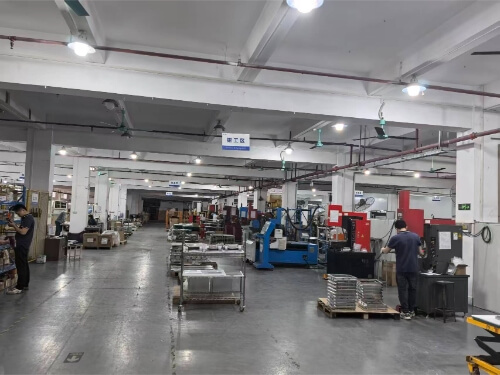
Understanding the Need for Fast Sheet Metal Prototyping
Fast prototypes help teams get real data early and avoid delays that slow entire projects.
Why Speed Matters for Australian Importers?
Australian importers rely on long overseas routes, so precise timing is crucial. Engineers require genuine parts to verify fit, alignment, airflow, cable paths, and structural integrity. When prototypes arrive late, pilot builds, internal reviews, and customer demos all get pushed back. Fast prototypes minimise these shifts and maintain momentum.
Common Delays Faced in Traditional Overseas Manufacturing
Traditional production often moves slowly due to long queues, tight machine schedules, and delays caused by design changes. Shipping introduces additional variables, including weather, customs checks, and airport congestion. These factors combine to stretch the timeline and limit the ability to test parts when needed.
How Faster Prototyping Reduces Project Risks and Costs?
Early samples expose design issues before they become expensive. Engineers can observe bend behaviour, hole spacing, and tolerance stack-ups that CAD models may overlook. Quick cycles reduce redraws and prevent costly late-stage adjustments. This keeps budgets in control and protects the project from unexpected setbacks.
Overview of Cross-Border Sheet Metal Prototyping Services
Cross-border services give Australian teams access to fast production, flexible processes, and trained engineers.
Typical Prototype Parts Requested by Australian Buyers
Common requests include brackets, enclosures, panels, test fixtures, machine guards, and minor structural assemblies. These items help confirm alignment, access, airflow, and mounting points. More advanced parts may include tabs, slots, louvres, reliefs, welded joints, or hardware for early functional testing across machinery, automation, electrical equipment, and robotics projects.
Materials Commonly Used for Rapid Sheet Metal Prototypes
Aluminium offers light weight, fast cutting, and easy forming. Stainless steel provides robust corrosion resistance in outdoor, food, and medical environments. Mild steel supports cost-effective trials and welds easily. Some teams also choose galvanised steel, copper, or brass, depending on electrical, cosmetic, or durability needs. Selecting the right material helps the prototype reflect real working conditions.
Production Methods That Support Fast Turnarounds
Laser cutting enables fast, flat-pattern production without the need for tooling. Bending empowers the creation of accurate angles with a significantly reduced setup time. Welding, tapping, hardware installation, and simple finishing help build functional samples suited for testing. These processes enable teams to transition from a 3D model to a fundamental part in a short and predictable timeframe.
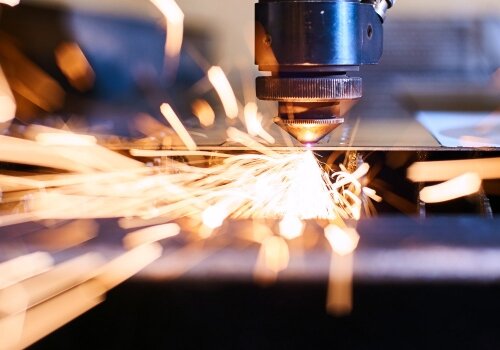
Shengen’s Fast Prototyping Workflow for Australian Clients
A structured workflow helps Australian teams receive high-quality prototypes quickly and reliably.
Rapid Quoting and DFM Feedback
Quotes usually arrive within one business day. Engineers review every file to check bend radii, flat patterns, hole spacing, flange length, and material limits. Early DFM notes help refine designs before production, reduce rework, and maintain a steady timeline.
Engineer-Supported File Review and Optimisation
Experienced engineers check tolerances, forming behaviour, and manufacturability. They highlight possible cracking, distortion, or tight spacing and provide simple adjustments that improve part strength and process flow. Straightforward suggestions help teams update drawings with confidence and avoid unnecessary trial loops.
Streamlined Production Line for Prototype Orders
Prototype orders run through a dedicated path. Laser cutting is the first step, followed by bending, welding, and hardware installation. Each step moves with minimal queue time because the workflow is designed for speed rather than mass-production volume. This helps maintain consistent turnaround for both simple and complex parts.
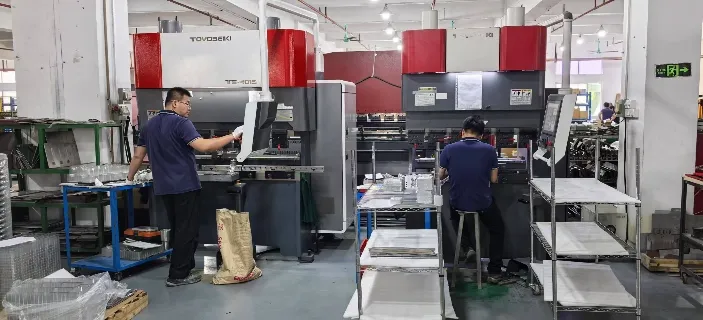
Shipping Speed: How We Deliver to Any Australian City?
Fast air routes enable teams across Australia to receive prototypes within a predictable timeframe.
Air Freight Options for Rapid Delivery
Express air freight connects directly to Sydney, Melbourne, Brisbane, Perth, and Adelaide. Many shipments reach major cities within several working days after dispatch. Small packages move even faster and integrate smoothly into carrier networks.
Lead Time Expectations for Different Order Sizes
Simple cut-and-bend parts often ship within a few working days. Parts with welding, hardware, or assembly take slightly longer but remain predictable in terms of time. Larger batches follow a structured process that provides steady timing, even when the order includes multiple components.
Coverage for Major Cities and Regional Areas
Direct flights support fast delivery to major cities. Regional locations receive packages through local carriers after arrival at the main airport. This setup ensures consistent arrival times for buyers working in commercial hubs, industrial sites, or remote project areas.
Packaging, Quality Protection, and Damage-Proof Handling
Strong packaging and thorough inspections ensure that parts arrive in clean and usable condition.
Protective Packaging Methods for Long-Distance Shipping
Each part receives a protective wrap to prevent scratches. Foam sheets separate layers, while custom inserts protect corners, bends, and welded areas. Double-wall boxes provide structure for long routes and reduce stress caused by stacking or vibration.
Moisture, Vibration, and Impact Control During Transport
Sealed bags and humidity packs prevent moisture damage. Foam cushions limit movement inside the box, and impact-absorbing layers protect fragile edges and thin walls. These steps reduce transit issues and help the parts remain ready for testing on arrival.
Quality Checks Before Shipment to Prevent Rework
Inspection teams check dimensions, bend angles, hole spacing, and flatness. Surface reviews confirm that no dents, scratches, or distortions appear. Only clean, accurate parts are moved to packing, which reduces the risk of delays caused by rework.

Smooth Customs Clearance for Australian Imports
Precise and accurate documents facilitate swift customs processing, ensuring predictable arrival times.
Required Documents for Sheet Metal Prototype Shipments
Shipments include a commercial invoice, packing list, and airway bill. These documents list materials, quantities, and box counts, helping customs officers verify shipment details quickly and accurately.
Duties, HS Codes, and Declared Values
Correct HS codes ensure customs can classify the parts without delay. Declared values match the real prototype cost and reduce the risk of additional checks. Clear descriptions prevent confusion and ensure the shipment moves smoothly through customs without interruption.
How Shengen Helps Buyers Avoid Delays at Customs
Documents are prepared beforehand for handoff to the carrier. HS codes, values, and descriptions are verified to reduce inspection risk. Tracking details are shared immediately. If customs requests extra information, the team responds quickly to keep the shipment on schedule.
Why Australian B2B Buyers Choose Shengen?
Australian teams look for suppliers who offer speed, accuracy, and clear communication throughout the project.
Experience Working With Australian Standards and Requirements
The engineering team frequently collaborates with drawings from various Australian sectors, including automation, machinery, and electrical equipment. They are familiar with local material choices, tolerance expectations, and drawing styles. This reduces revisions and ensures prototypes align with functional and safety requirements.
Consistent On-Time Delivery Track Record
A structured production flow and reliable air freight routes help maintain consistent delivery. Prototypes usually leave the facility within the planned window after inspection. Australian teams benefit from stable timing that supports testing, internal approvals, and design revisions.
Transparent Communication and Real-Time Order Updates
Updates are shared at each step, including cutting, bending, welding, and packing. Tracking is sent immediately after dispatch. This transparency enables engineers and buyers to plan meetings, review sessions, and pilot builds with confidence.
Cost Considerations for Fast Overseas Prototyping
Speed and cost can work together when the process is organised well.
Managing Air Freight Costs Effectively
Freight cost follows size and weight. Compact packing and lightweight materials help lower charges. Good route planning prevents unnecessary fees and shortens transit time.
How Efficient Production Reduces Total Project Cost?
Laser cutting and CNC bending avoid tooling expenses and reduce setup costs. Early DFM feedback prevents late-stage redesigns. Fewer redraws and fewer emergency shipments result in lower total project costs and an improved overall development cycle.
The Price Advantage vs Local Manufacturing
Overseas production can offer a lower unit cost due to its lean labour structure and flexible equipment utilisation. Small and medium batches remain affordable, even with air freight. Many Australian teams opt for cross-border prototyping because it yields fast results and aligns with budget constraints.
Get your sheet metal prototype delivered to any Australian city quickly and hassle-free. Upload your CAD file today for a free DFM review and a precise quote within 24 hours.
FAQs
How fast can prototypes be shipped to Australia?
Most express shipments reach major cities within several working days. Regional areas may take slightly longer, depending on the final carrier routes.
What is the typical lead time for sheet metal prototypes?
Simple prototypes often ship within a few working days. More complex parts take longer, but the timeline stays consistent and predictable.
How do you ensure quality during overseas transit?
Parts receive moisture protection, foam support, and strong packaging. Final inspections confirm dimensions and surface quality before the product is packed.
What file formats do you accept for prototypes?
STEP, STP, DXF, DWG, and PDF files are accepted. A 3D model, along with a precise 2D drawing, speeds up the review and quoting process.
Can you support repeat production after the prototype is complete?
Yes. The same workflow supports both small and medium-volume production, ensuring consistent quality from sample to final run.
Hey, I'm Kevin Lee

For the past 10 years, I’ve been immersed in various forms of sheet metal fabrication, sharing cool insights here from my experiences across diverse workshops.
Get in touch

Kevin Lee
I have over ten years of professional experience in sheet metal fabrication, specializing in laser cutting, bending, welding, and surface treatment techniques. As the Technical Director at Shengen, I am committed to solving complex manufacturing challenges and driving innovation and quality in each project.

